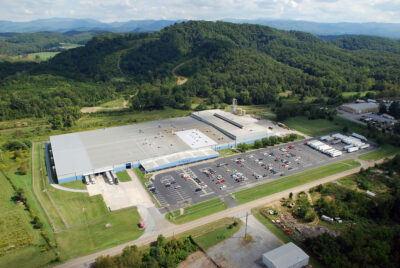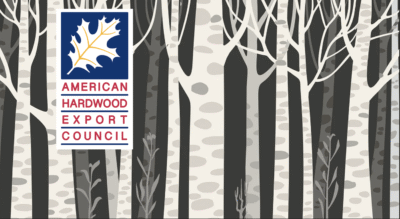Quebec Business Trends 2025 – Quieter Business Market Sets The Tone
The impact of U.S. tariffs are being felt around the globe, as well as on hardwood lumber and products imported and exported in the province, as well as, across the country. This is causing production declines in all areas, which were already declining prior to tariffs imposition. Based on information from various sources, this is happening south of the border. Future business will stall if these tariffs are not suspended again or completely removed. Business was quieter due to the usual summer break, and also to the slowdown in housing construction and renovations. Overseas shipments slowed to Europe due to their summer break period.
Mills were not cutting much Ash, but green lumber was moving steadily, with prices stable, keeping No. 2A and Better levels consistent. Kiln-dried lumber prices were steady too, driven by limited supply rather than strong demand.
Demand for Cherry is weak, with mills and yards struggling to move product. April is usually strong for shipments to China, but this year’s exports were the lowest so far due to trade issues. Interest is low both internationally and domestically with new orders minimal. Despite reduced production, supply still exceeds demand.
For the regionally important species Hard Maple, green sales are steady with stable prices. Demand is stronger for No. 1 Common and Better, but No. 2A is also selling. Prices for green White and Unselected grades are stable. Kiln-dried markets are more active, with some prices rising again after a recent pause.
Demand is stronger for No. 1 Common & Better than for No. 2A Soft Maple. Prices are rising for kiln-dried, Sap and Better No. 1 Common and No. 2A, and Unselected No. 2A. However, prices drop for Sap and Better FAS and the upper range of FAS.
More action was seen on prices for green Hickory as demand was stronger with supplies low.
However, contacts noted prices are slightly down for kiln-dried items.
It was noted that residential flooring plants actively bought lumber due to strong finished goods sales and low raw material inventories. Competition from trailer flooring and crosstie markets further tightened supply. Low log inventories in some areas prevented sawmills from meeting their customers’ needs.
Red Oak sales are firm, with contacts calling it a top mover. Yet, producers are cautious about increasing output. Green lumber demand is stronger for No. 2A and 3A, driven by flooring manufacturers, while kiln-dried demand is better for No. 1 Common and Better grades. Prices are rising for certain grades and thicknesses, while others are down.
White Oak is selling well both domestically and internationally despite tariffs affecting April exports, shipments are slightly higher over last year. Some items are facing oversupply, pushing prices down for green and kiln-dried items. Demand from flooring plants is raising prices for No. 2A, noted contacts.
Orders for green Poplar leveled off, and prices are mostly steady or declining slightly following spring increases. Producers are still getting orders for No. 1 Common and Better Poplar. Some manufacturers in the moulding, millwork and component sectors commented demand is decent for finished goods with lumber inventories adequate.
Walnut sales have improved, demand rebounding which leads to more active purchasing. Prices were noted as up for green and kiln-dried items.
Deloitte’s latest outlook forecasts sluggish GDP growth in Ontario (0.4 percent) and Quebec (0.5 percent) this year, with both provinces being hit hardest by trade disruptions and are expected to trail other provinces in 2025 amid a modest national recession. In contrast, energy-producing provinces are expected to lead growth.
“Tariffs are expected to be most impactful in Ontario as it is the top exporter of steel and finished automobiles,” the report said. “Indeed, Central and parts of Eastern Canada are facing the most subdued economic growth forecast this year, with Ontario particularly hard hit given its exposure to industries with large tariffs in place.”
Dawn Desjardins, Chief Economist at Deloitte, and contributor to the report, said the decline in immigration will also have an effect. Much lower inflows in the labour force in the two provinces will weaken consumption and keep the economy on a slower trajectory. The Canadian economy is projected to enter a modest recession in Q2 and Q3 before returning to growth by late 2025, with full year GDP growth forecast at 1.1 percent this year and 12.6 percent in 2026.
Unemployment is expected to peak at 7.3 percent in Q3, rising from 7 percent in May.
The manufacturing sector has taken the brunt of tariff impacts on steel, aluminum, softwood lumber and passenger vehicles, spilling over into transportation, warehousing, and business services, all of which have seen workforce reductions. Business investment will likely stay negative through most of the year but could rebound by late 2025, depending on improved U.S.-Canada relations and infrastructure plans.
Recent federal legislation streamlining major projects and reducing trade barriers may help. If government spending direction becomes clearer, corporate investment could resume. Deloitte also anticipates two more Bank of Canada rate cuts this year, potentially lowering rates further.
Talks between Canada and the U.S. on a new economic and security deal was expected to conclude by July 21 (at time of writing). If the deal preserves Canada’s preferential status under the Canada-United States-Mexico Agreement, it may lift the economic outlook.







